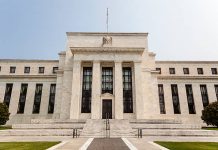Real GDP declined 1.1% (annualized) in the second quarter, well below consensus expectations for a 2.5% expansion. This left GDP around 2% below pre-pandemic (2019-Q4) levels. In nominal terms, GDP increased by 7.9% annualized in the second quarter.
The weakness in the quarter was driven by a substantial drop in residential investment (-12.4%), and exports (-15%). The former was held down by significantly lower home resale activity as home ownership transfer costs fell 54.2% (annualized) in the quarter, while exports were hobbled by supply chain disruptions, particularly the semiconductor shortage which lowered motor vehicles and parts production.
Meanwhile, business investment rebounded on the back of greater spending in the machinery and equipment category (+24.9%). Non-residential structures (+5.1%) and intellectual property products (+3.3%) also advanced in the second quarter. In terms of household consumption, spending was fairly flat (+0.2%). A rebound in outlays for services (+7.3%) was largely offset by a drop in goods expenditure (-7%). Notably, 32 out of 48 goods categories experienced declines in the second quarter.
On the income side, household disposable income rose 9.2% in annualized terms in the second quarter, outpacing the gain in consumption. As a result, the savings rate increased to 14.2%, the fifth consecutive quarters it’s been in double-digit territory.
Statistics Canada also released monthly GDP data for June, which showed a 0.7% m/m expansion. The statistical agency also stated that preliminary data for July indicates a 0.4% decline in output for the month.
Key Implications
The Canadian economy lost momentum in its road to recovery in the second quarter of 2021. The cooling housing market and ongoing supply chain disruptions, particularly in motor vehicles, weakened economic activity during the quarter. The third wave and pandemic restrictions also kept a lid on household consumption. This was the first decline in quarterly GDP since the pandemic struck in the second quarter last year.
That said, today’s data were not all gloomy. The GDP performance in June was encouraging as the vaccine rollout ramped up, and provinces gradually reopened their economies. The advance estimate for July was disappointing, but this was again probably due to cooling housing market activity, and supply chain disruptions. On the consumption side, consumers are reorienting their spending from goods to services, which is weighing on retail trade output. But as spending and saving patterns normalize, we expect consumption to drive GDP growth in the third quarter.
Looking further ahead, clouds are forming for the Canadian economy. Primarily, the Delta variant is spreading quickly in Canada, resulting in an uptick in cases and hospitalizations. International experience suggests this could be the beginning of a prolonged battle with this strain of the virus. Provinces and businesses are already responding to the threat with a number of policies such as vaccine passports, mandatory vaccinations and regular testing. While this will likely help mitigate the impact of the fourth wave, business and consumer confidence could be negatively affected. The pandemic is not yet over, and as long as its here, the road to recovery will be a bumpy one.













